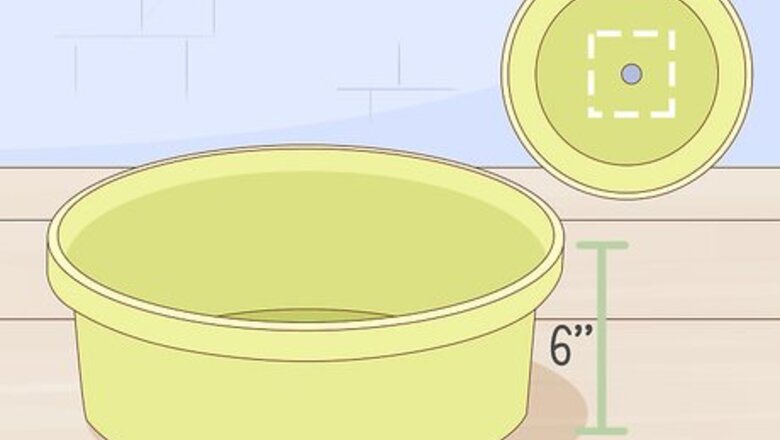
views
Sprouting New Onions from Old Bulbs
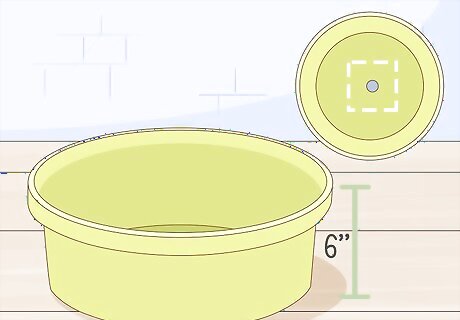
Choose a deep container with drainage holes in the bottom. You'll need a container that is at least 6 inches (15 cm) deep. The width of the container is up to you, depending on the space you have available and how many onions you’d like to grow. If you’d like bigger onions, go with a deeper container to give it space to sprout. To grow several onions, try a wide, tub-shaped container. Onions need about 3 inches (7.6 cm) of space between each plant to grow. The type of container is up to you. You can grow the onions in plastic, ceramic, glass, or any other material that matches your style, decor, and budget. You can even grow them in recyclable plastic bottles.

Fill the container with a simple potting mix soil. Onions are hearty vegetables and do not need any complex or expensive soil. Leave about 1 inch (2.5 cm) of space between the top of the soil and the top of the container. While not necessary for the onions to grow, you can opt for a nitrogen-rich fertilizer to increase the quality and the size of your onions.
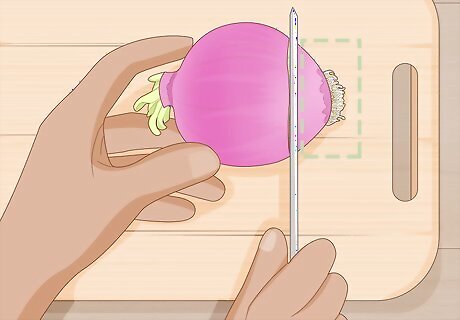
Save a starter onion bulb from leftover cooking scraps. The part of the onion where the roots grow is what you need for planting. Usually this part is cut off and discarded when cooking, but instead of throwing it away, save it and set it aside for planting. You can also use an entire onion bulb, but it’s not necessary. You only need the end that the roots sprout from.
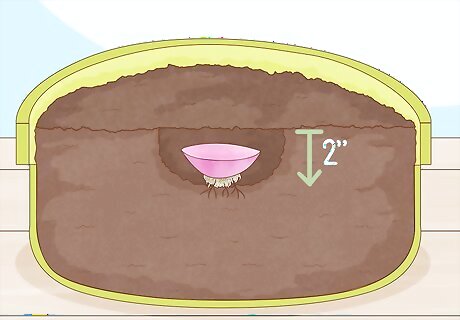
Plant the onion bulb about 2 inches (5.1 cm) into the soil. Make a pit with your fingers, about 2 inches (5.1 cm) deep, and place the bulb inside. Then, cover the bulb with soil and add water until the soil is just moist. The soil should not be soaking wet, but it should feel damp to the touch.
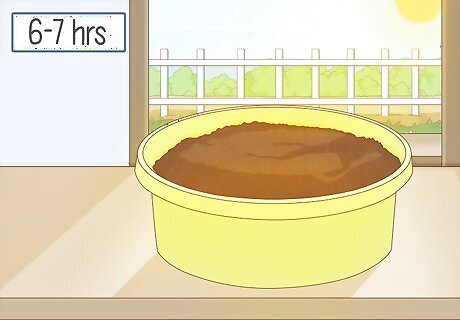
Place your potted onion where it can get 6-7 hours of sunlight per day. Depending on where you live and the time of year, it may be impossible to give the plant this much sunlight. In that case, you can supplement the sun’s light with an artificial light source. You can use a regular fluorescent or incandescent light or purchase a grow lamp online or from a gardening center or home improvement store. If you are forgetful or don't want the hassle of remembering to time the lights, you can regulate the timing with an inexpensive home timer or by buying a light fixture with a built-in timer. These are all available at any home improvement store or garden center.
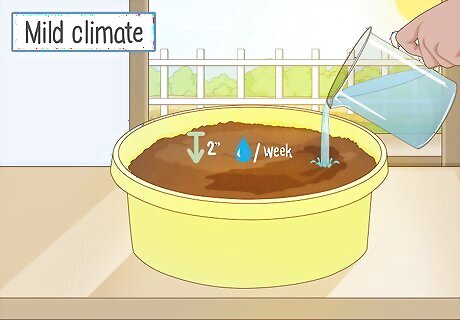
Water your plant enough to keep it moist at all times. Check the soil daily and add water to maintain consistent moisture. To test it, press on the top of the soil with a dry finger. If the top of soil is dry and brittle, then you need to add a little water. In a mild climate, your onion plant will need a minimum of 2 inches (5.1 cm) of water per week. If your weather is hot or the air is particularly dry, you will need more.
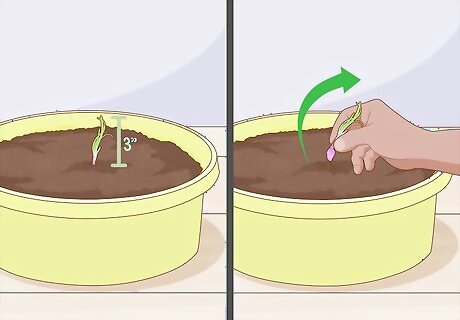
Harvest your onions when the sprouts are 3 inches (7.6 cm) high. You can wait longer to allow the bulb to grow bigger, but once it reaches 3 inches (7.6 cm), you can dig out the onion, clean it, and eat it. You can either use the bulb for cooking at this point or transplant it outdoors.
Growing Onions from Seeds

Choose a partitioned container with drainage holes in the bottom. Ideally, your container should be at least 6 inches (15 cm) deep to allow space for roots to grow. However, you can start with a smaller container and move the plants after they've begun to sprout. The width of the container is up to you, depending on the space you have available and how many onions you’d like to grow. Drainage holes are important when planting seeds because if the soil is too wet, the seeds will not sprout. The container does not have to be partitioned, but it helps to have the plant contained to a small section when transplanting to a larger pot later.
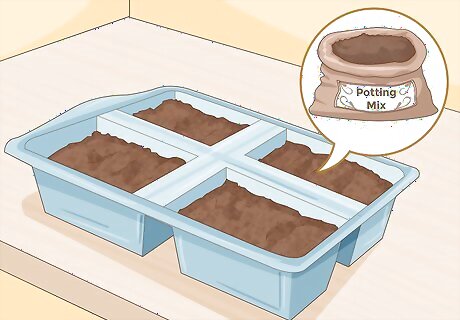
Fill the partitions with a simple potting mix soil. Onion seeds will grow in any nutrient-rich soil. When filling the partitions, leave about 0.5 inches (1.3 cm) of space between the top of the soil and the top of the container. While not necessary for the onions to grow, you can opt for a nitrogen-rich fertilizer to increase the quality and the size of your onions.

Purchase onion seeds from a garden center or home improvement store. Any type of onion seed will grow, so you can choose whatever seeds you like according to your taste. Purchase as many seeds as you want onion plants or even a few extra in case some do not sprout.
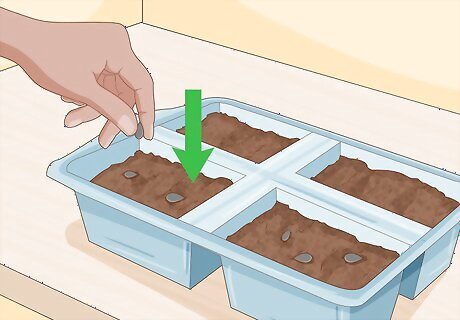
Plant the seeds by laying them on top of the soil and covering them. Spread 2 or 3 seeds evenly on top of the soil in each partition. Then, cover the seeds with a light layer of soil and add water until just moist. Using more than one seed per partition will increase your chances of growing a viable plant. Onions seeds are good for up to two years, but fresh seeds will germinate quicker and produce better results.
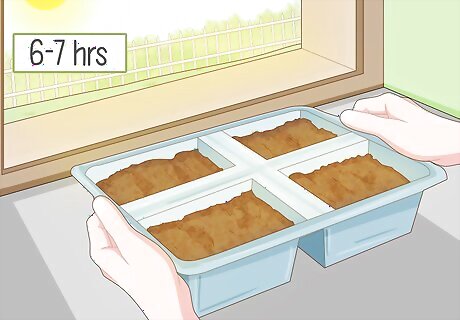
Place the pot where it can get at least 6-7 hours of sunlight per day. If you live in a location where that is not possible, use an artificial light source to supplement the sun's light. You can use a regular fluorescent or incandescent light or purchase a grow lamp online or from a gardening center or home improvement store. The idea is to replicate the amount of the light the plant would normally receive, so you don't want to leave it on all day. To avoid having to remember to turn the light off, add an inexpensive timer to your lights or buy a light fixture with a timer built in.
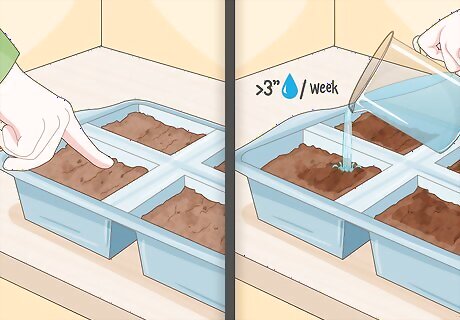
Check the soil daily and add water when it feels dry to the touch. The soil needs to stay moist but not too wet in order for the seeds to grow. Every day, push on the top of the soil with a dry fingertip and if it feels dry, add a little water. Your plants should not need more than 3 inches (7.6 cm) of water per week, unless you live in a very arid or hot climate.
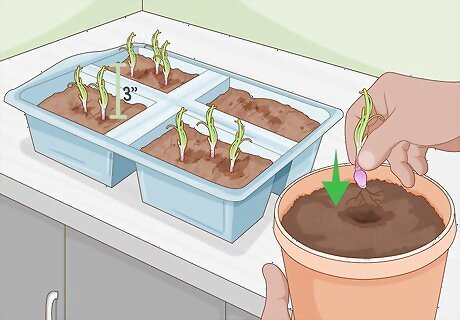
Transplant the seedlings once the sprouts are 3 inches (7.6 cm) high. You can harvest them as small onions if you like or, if you want them to grow a little bigger, you can transplant them. Once they are at least 3 inches (7.6 cm) high, you can pull the whole plant, soil and all, out of the partition and replant it. You can transplant them into a larger pot with more soil and continue to water and give them time to grow or you can move them to an outdoor garden.
Regrowing Cut Spring Onions in Water
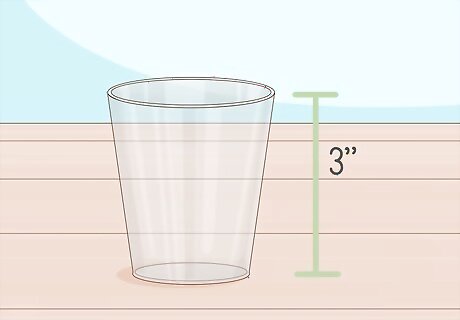
Choose any container that is at least 3 inches (7.6 cm) deep. Spring onions will grow in a vase, a drinking glass, a paper cup, a bowl, or any other container you can imagine. Choose the container based on your style and budget. It’s fun to watch them sprout and grow in the water, so if you’d like to see what’s happening, opt for a clear container like a mason jar or drinking glass.

Purchase and prepare a few spring onions. Buy a bunch from the grocery store or your local farmer’s market. Look for bunches of spring onions with long roots because the longer the onions' roots, the quicker they sprout new growth. You can trim the tops off the onions or wash them first to make them look nicer on your counter, but those steps are not necessary for onion growth.
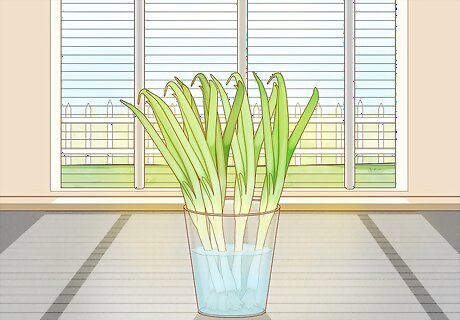
Place the onions in your container and fill with water. Add lukewarm water to the glass until it reaches the level on the onions where they turn green. You really only need to keep the roots in the water. These onions do not need direct sunlight to resprout, so you can leave them in a convenient place in your kitchen, as long as it has some sunlight. If the onions are not growing, try moving them a little closer to the light source.

Change the water every few days. You’ll want to keep the water clean, so changing it every few days will keep it clear and keep new growths coming. As long as the water is clean and clear, the onions will continue to grow. If you don’t keep the water clean, the onions will start to decay and you will have to start over again.
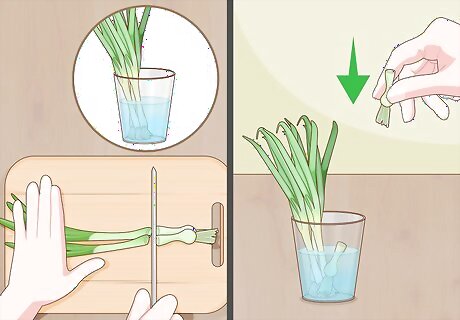
Trim the ends of the onions for cooking and leave the roots in the water. Whenever you want spring onions for cooking, trim the green part off the onion for use and return the root to the container. It will only take about a week for a completely new growth to form. You can keep repeating this process indefinitely.
















Comments
0 comment